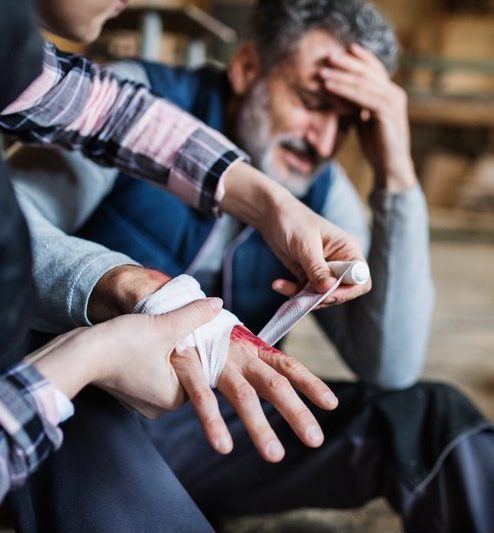
Workplace Incidents in 2020: Critical Areas to Investigate after an Incident
Workplace incidents are, unfortunately, an inevitable part of life. Industries such as construction are particularly at risk of incidents occurring due to the often dangerous nature of the work carried out – more than 21% of all worker fatalities in 2018 were in construction. However, many of these incidents are ultimately preventable. It is, therefore, crucial to carry out a thorough incident investigation each time an incident occurs in order to understand what happened and why – and to minimize the chances of the same thing happening again. Here we take a look at the best practices for incident investigation in 2020.

Review
It’s essential to assess the work that was being carried out when the incident took place. You’ll want to look at the procedures and processes being followed at the time and whether or not they are considered safe. Perhaps there were safety measures and devices that were not functioning as they should or the required tools for the job were not available. Conditions such as the weather might have factored into the incident – for example, by rendering ordinarily safe procedures unsafe. Gaining an overview of the situation in the lead up to the incident will help to determine where things started to go wrong.
Examine
To find out whether the incident happened due to an issue with the materials or equipment used, you’ll need to look in-depth at factors such as whether there were hazardous products in the mix and, if so, whether they were clearly marked as such. It could be that the equipment was shoddily manufactured or that it has a design fault that caused it to fail. Human error is, unfortunately, responsible for a large number of workplace incidents, and so checking whether the workers involved were employing the correct protective equipment – and, if not, whether they had been properly trained to do so – is essential.
Environmental Conditions
It’s important to look at the overall conditions of the workplace or site where the incident happened. It could be that it occurred due to the environment being different from usual so it’s crucial to understand exactly how things were rather than assuming that normal conditions were present. This might be a change in weather or temperature or even that higher than usual levels of noise created a situation where the workers could not hear properly. Perhaps the light was inadequate or hazardous substances created a problem. It might even be that proper procedures for maintaining the workplace were not followed and that this caused or contributed to the incident.
Training & Physical, Mental Conditions
While the purpose of getting to the bottom of an incident should never be primarily to apportion blame – in fact, this is counterproductive to good safety practices going forward – it is still necessary to take into account the state of the people involved at the time of the incident. You’ll want to look at whether they were in good health – both physically and mentally – and whether they were under any particular stress or strain either at work or at home. The number of hours and the shifts they’d carried out in the period immediately beforehand may be an important factor too. Training is also key. Whether or not employees are sufficiently trained and experienced in the work they are undertaking is a critical factor to consider in any incident investigation. This will allow you to change or adjust your training procedures as necessary going forward.
Supervisor Role

Legal responsibility for safety when it comes to workplace incidents falls ultimately to your management. Examining the role – or failure – of supervisors and managers is, therefore, absolutely non-negotiable when investigating an incident. It may turn out that organizational factors are the direct or indirect cause of the incident. You’ll want to make sure that all the relevant safety procedures were clearly transmitted and understood by the workers and that these procedures were also being enforced and not left to slide. Perhaps there was a training issue – for example, not extensive enough during onboarding or, conversely, in-depth training for new hires but a failure to update or refresh training requirements in longer-serving employees. Or maybe procedures surrounding hazardous materials and equipment maintenance were not robust enough. You’ll need to check that safety inspections were being conducted regularly too. Identifying safety issues in the organizational systems of your company is key in preventing future occurrences of an incident.
Data Integrity
Once you have completed a review of an incident, it is absolutely crucial that you preserve the investigation documents for future reference. If you have incident management software, this will ensure that all of your incident investigation forms and data are stored and preserved safely – usually in the cloud, which means that even an issue with your hardware won’t affect them. Not only does this give you future access to previous incidents, but the software should also be able to highlight patterns and identify trends and root causes. This will give you a head start on minimizing – and preventing – the recurrence of incidents in your workplace.
These best practices for incident investigation in 2020 should hopefully help to guide you when conducting an investigation. It is extremely important not to focus too quickly on a specific cause – even if that cause may seem glaringly obvious from the outset. Often there are indirect as well as direct reasons for an incident occurring and it is essential to identify all of the causes to give your company the best chance of avoiding a repeat performance in the future. By looking at each of the areas outlined above, you will be on the right track to achieving this.






























